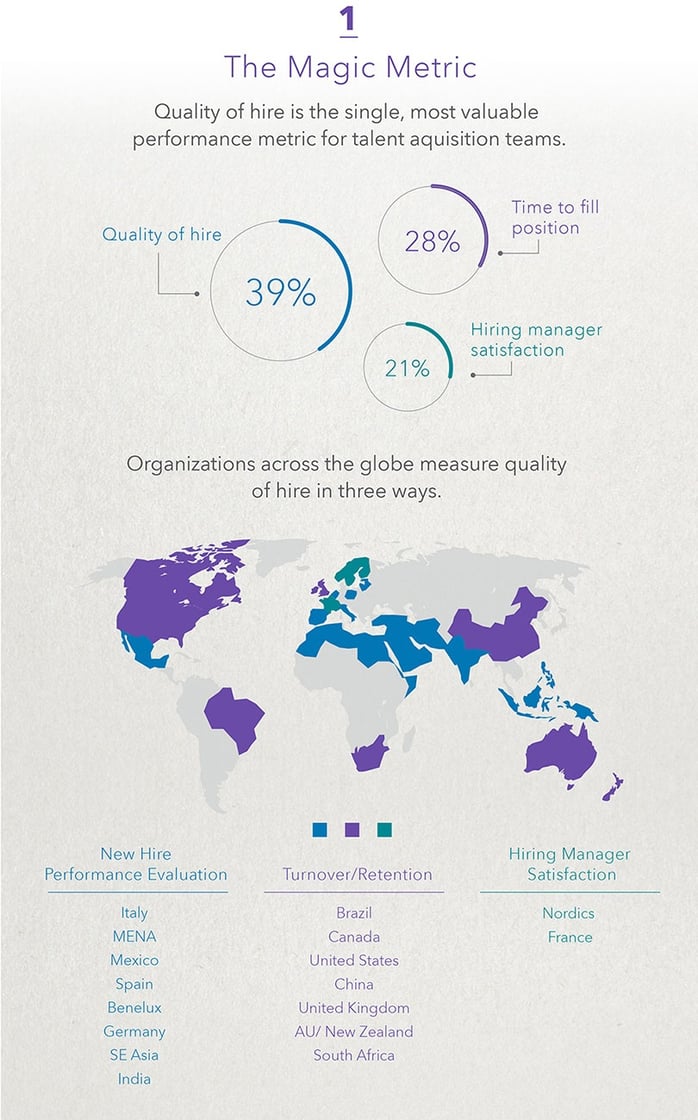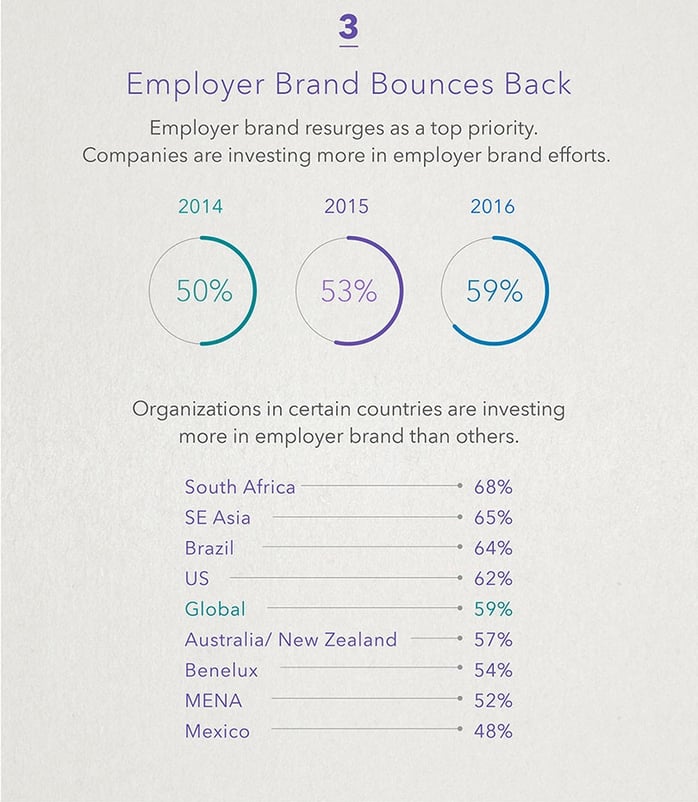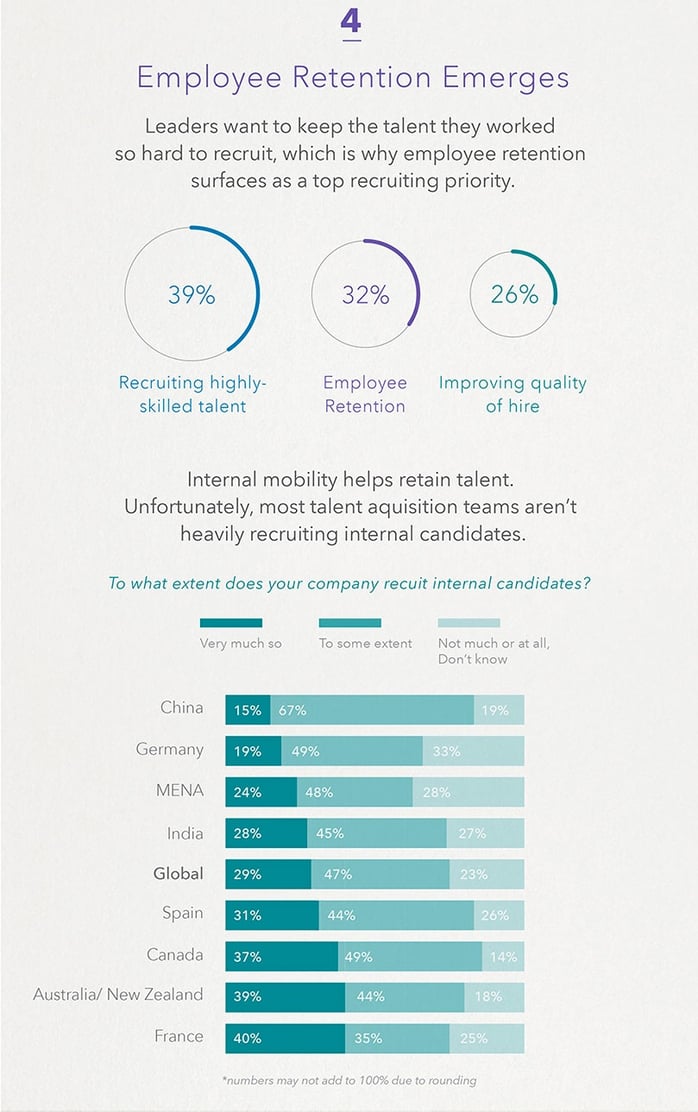Each year, LinkedIn releases a major recruiting trends report, indicating how talent acquisition will change.
From the latest report, available here, emanate four major trends, reflecting a fundamental idea: Relationship is at the heart of recruitment in 2018.
As Inbound Recruiting is, by definition, a relationship strategy, established through the delivery of quality content, we'll show you how it can effectively meet these 4 challenges.

The four major trends LinkedIn describes in its "Global Recruiting Trends 2018" are:
1 - Measuring the quality of hires...except in France
Quality of hire is the most important indicator for teams in charge of recruitment.
39% of decision makers surveyed by LinkedIn put it at the top of their priorities, ahead of the time taken to fill vacancies (28%) and the satisfaction of managers at the origin of the hire (21%). This last indicator is the one that matters most in France, as well as in Scandinavia.

2 - Find talent faster
The second trend in 2018 recruiting is the need to find talent faster, based on professional social networks, job boards and co-optation programs. In fact, cooptation has sharply increased over the past 2 years.

3 - Investing in employer brand
The employer-branding has long been a top priority for recruiters. Companies are investing heavily on it to attract talent, with a 6-point increase in overall budgets between 2017 and 2018.

4 - Retain the best
Staff retention is the fourth strong trend in 2018 recruiting.
Companies are devoting enormous resources to attract human capital. The "talent war” is present, especially due to globalization, digitalization and impending labor shortages.
It is notable that France stands out for its internal promotion rate, twice that of Germany, for example.

The answer ? Inbound Recruiting
It should be noted that on these four aspects, Inbound Recruiting provides real solutions.
- On the quality of hires
By working on premium content specifically designed for the brightest passive candidates, Inbound Recruiting significantly increases the quality of hires. Before the actual recruiting phase even begins, a engagement and conversion work will have been put in place with these candidates.
- On the speed of talent acquisition
In general, the difficulty in finding candidates quickly comes from the lack of upfront work to identify them. In the Inbound Recruiting approach, the database of potential candidates is regularly managed and qualified.
By maintaining a good level of nurturing, a recruiting department will therefore be able to quickly find a few profiles in its database that can match the company's needs.
- On employer brand
Employer brand is probably the element of recruitment strategy that benefits most from Inbound Recruiting. For example, we know that employer brand is a major issue in retaining talent and/or Generation Y.
They are tech-savvy and very demanding when it comes to employment, so they are harder to attract and retain. By playing "fair" with them, i.e., offering them objectively useful information, and "pampering" them with a smartly designed automated email workflow, it is significantly easier to get their attention and consideration.
- On staff retention
Downstream of the process, Inbound Recruiting continues to bring beneficial effects to the employer brand: its effects are indeed perceptible both by the "flunked" candidates but who will keep a good memory of the company and by the employees already in place who will appreciate that their company makes this type of approach. Therefore, this approach contributes to decrease the turnover.








